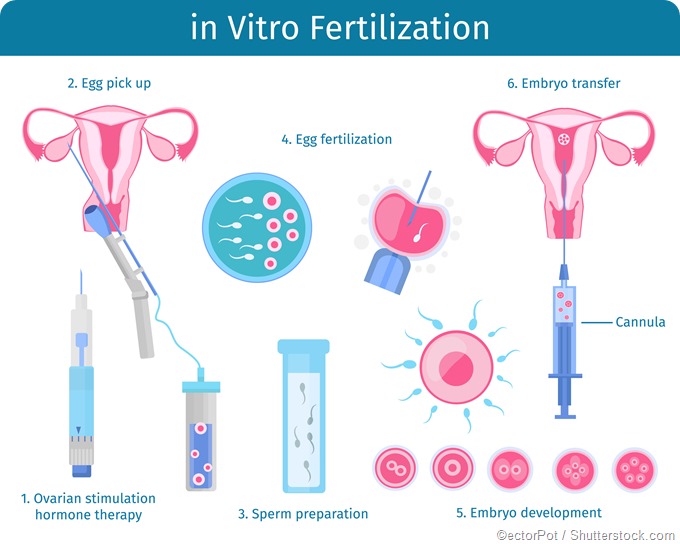Reproductive technology has advanced tremendously over the past few decades. It started in 1978 with the birth of Louise Brown by in vitro fertilization (IVF) to a previously infertile couple.
IVF refers to the fusion of an egg and a sperm outside the woman’s body i.e. in the laboratory. The fertilized ovum or egg is then allowed to grow for some time in a special culture medium, before being implanted in the womb of the woman who is to undergo the pregnancy. Achieving conception is dependent upon artificial assistance, and is therefore part of the group of technologies called assisted reproductive technology (ART).
intracytoplasmic sperm injection of human egg
Indications
IVF is usually performed when other less expensive techniques to help a couple conceive have failed, usually because of:
- Advanced maternal age
- Tubal infertility, usually caused by pelvic inflammatory disease or surgery of the reproductive tract
- Endometriosis with or without tubal damage
- Male factor infertility
- Unexplained infertility
The procedure
IVF involves five steps:
- Hyperstimulation of the ovaries is done to allow the release of more than one ovum. This is also called superovulation.
- Egg retrieval is achieved by aspiration of the follicle, to remove the ova from the body (at this step, if the woman cannot produce any eggs, donor oocytes may be used).
- Insemination and fertilization. During these steps, the male partner’s sperm is mixed with the ‘best’ of the retrieved eggs, to encourage fertilization under controlled conditions. This is usually done within a few hours however; alternate procedures may be used at this stage if the doctor feels that unassisted fertilization is highly unlikely, or, even in some modern settings.
- Embryo culture is implemented in case the ovum is fertilized. This allows the embryo to divide into several cells - this phase usually lasts about five days. Within this period, preimplantation genetic diagnosis (PGD) may be performed especially if either partner has a high risk of transmitting a genetic condition to the offspring. This happens about three or four days after fertilization occurs and requires a single cell to be removed from each embryo. However, this is not done at all centers because it is surrounded by controversy.
- Embryo transfer into the womb is carried out within three to five days after fertilization. It must implant into the endometrium to become a pregnancy. In most cases, multiple embryos will be implanted to increase the chances of successful conception. Embryos left over are frozen and implanted for use at a later time, or donated for the use of others.

Risks
The following may contribute to high levels of stress in couples undergoing IVF:
- Physical side effects
- The expense of treatment cycles
- Emotional upsets
- Time off work
Associated risks of IVF treatment include the following:
- Ovarian hyperstimulation syndrome (OHSS)
- Miscarriage or ectopic pregnancy
- Multiple pregnancy with its increased dangers to the mother and fetuses
- Pregnancy-induced hypertension
- Poor perinatal outcomes
Disadvantages
IVF is an expensive procedure, and may not be covered in all insurance plans. Many clinics have lower than average success rates which may not be reflected in their advertising. The most important index of success is the live birth rate rather than the pregnancy rate. This ranges from around 40 percent for women less than 35 years to 18 percent for women over the age of 41 years.
References
- http://www.hfea.gov.uk
- https://www.ncbi.nlm.nih.gov/pmc/articles/PMC1936357/
- https://medlineplus.gov/ency/article/007279.htm
Further Reading